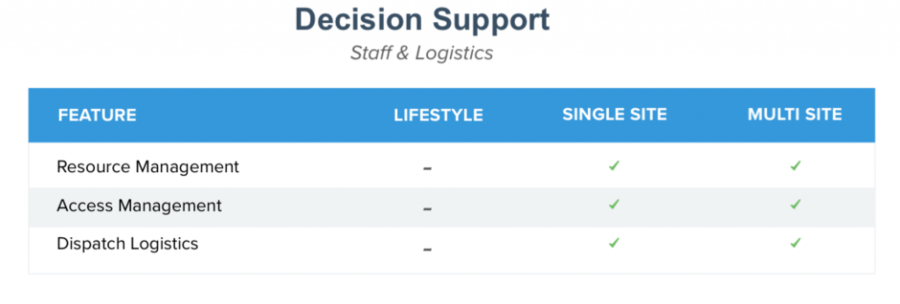If you’ve been keeping up with the posts in tour company software series, you’ve been following my wife and me on a hypothetical weekend getaway to Whistler.
We took a look at how tour operator marketing software helped us discover Whistler Eco Tours and Whistler Ebikes.
Then we saw how point of sale payments created a seamless booking and check-in experience.
Now, we are going to see how decision support technology can help the Whistler Ebike manage their operations.
Before Laurel and I arrive at Whistler Ebikes on Sunday morning their team prepares for the tour.
Our guide, Ash, arrives and checks the schedule to see what fleet of bikes he’s taking that day. Then he checks their records to see if any need to be tuned up. He notes that bike 6 had its battery replaced the night before, so he goes and double checks it to make sure it’s fully charged.
When he’s done, he checks the daily schedule to see the guests that will be on the tour and puts a helmet on each bike.
By the time Laurel and I get there, everything is ready.
So how did things fit into place so perfectly? That’s where decision support technology comes in.
Decision support technology
The goal of your decision support is to help manage your property and staff.

Resource management
Resource management helps you efficiently assign staff and equipment to your tour and activity inventory. It enables you to maximize revenue without overbooking. Resources are anything that you have a limited quantity of that you need for your activity. So if you have one bus for two separate tours, you need to make one tour unavailable when the other is booked. Similarly, with guides, you need to ensure you have enough to cover all the tours that day, yet not too many that it will unnecessarily eat into your payroll. Some booking software systems have ways to support this.
Resource management was used in the example to assign the bikes, helmets and our guide Ash to the tour. It also made sure the other tours had all the resources they needed and that no one was fighting over the last large helmet.
Access management
Access management is for companies that charge for guests to use their property or equipment. It’s commonly used for ski resorts, arenas, or parking lots. In order to be granted access, everyone needs a ticket. And rather than having someone stand at a booth to check tickets, you can set up equipment that uses software to scan RFID tags to let people in. The system also knows how long a person has access. For example, if someone pays for a 3-day lift ticket, the system will know to deny access if they try to get on the hill on day four.
There was no access management used in the example.
Dispatch logistics
If you operate a fleet, you’ll need dispatch logistics. You need to track fuel costs, maintenance inspections, depreciation, parts, and inventory. You also need to assign drivers to each vehicle. Dispatch logistics helps you manage your equipment and know when it’s been overworked. For example, you can keep track of how many sailings one of your boats has before it needs to be serviced. Some systems install GPS tracking in your vehicles, so you always know where your equipment is.
Dispatch logistics tracked the use of each bike, it’s how Ash knew one bike had its battery replaced the night before.
That covers the decision support technology group. But there is one other form of decision support that is involved in everything in the tech stack— reports and analytics.
Reports & analytics
Every software provider worth their salt will come with built-in analytics. Reports and analytics help you make sense of the day to day operations of your business and track trends over time. You can use them to find out the demographics of the people who come to your tours. To find out what activities are gaining popularity and the ones that it might be time to cut. You can even compare your revenue year over year to make a more informed purchasing decision. They are tools for you to make better business decisions.
While reports and analytics weren’t used in the example, they could have been used in many ways. For example, Whistler Ebikes could use analytics to see how many couples book together. If its common, they could add a couples ride package to increase sales.
And that’s it! That’s all of the elements of the tech stack available to you as a tour operator today.
Now you might be wondering about the API that links everything together. As I mentioned in my first post, not all of these systems are stand-alone tools. Some can provide you with many of these pieces. To illustrate we’ll take a look at Checkfront’s tech stack.
But that’s for later.
Want to see how an online booking system can help your business?

Start your free 21-day trial!
Online bookings. Flexible pricing. Outstanding support.



